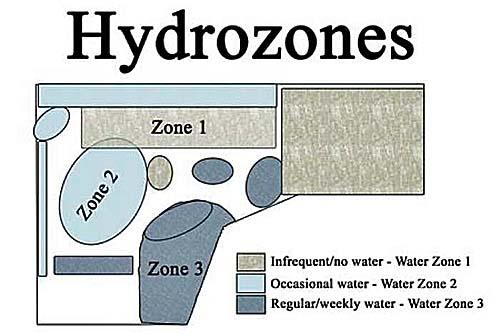
University of California
UC Master Gardener Program of Sonoma County
How to get started

Couple getting started with their project. Photo from pixabay.com.
Assess your landscape for the number of different watering zones you will need. Plants may have to be relocated to create new zones.
- One plant may require more water than another or call for more or less frequent irrigation. Or parts of your landscape may be in shade while other parts are in sun.
- Drip systems are most effective when plants with similar needs are grouped together. Grouping plants with similar water needs on the same irrigation line is called hydrozoning. For example, in the graphic below (courtesy of the Stanislaus County Master Gardener Program), you could have drought tolerant plantings in zone 1 with infrequent to no water; waterwise plantings in zone 2 with occasional watering; and a vegetable garden in zone 3 with more frequent watering.

Once the number of zones has been decided, select a type of system to use.
- A plan containing many zones may call for a system with valves and an irrigation controller.
- A plan with a couple of zones could function using a timer on a hose bib (faucet). A smart phone timer could be used to run drip manually.
- A sprinkler system can be converted to drip irrigation. Several ways to do this are explained in the links below.
The topics outlined below will help you install a drip system.
- Drip irrigation vs other irrigation methods
- How to get started
- Drip irrigation management
- Key considerations when implementing a drip system
- Drip irrigation basics
- Drip irrigation in different landscape situations
- Determining how much water to apply and how often
- Maintaining an irrigation system
- How to get help







